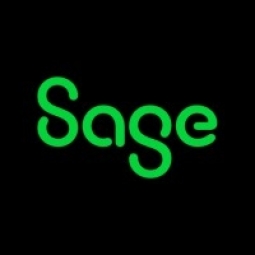公司规模
SME
地区
- America
国家
- United States
产品
- Sage 100 Standard ERP
- Sage SalesLogix Sales
- Return Merchandise Authorization module
技术栈
- ERP System
- CRM Software
实施规模
- Enterprise-wide Deployment
影响指标
- Productivity Improvements
- Customer Satisfaction
技术
- 功能应用 - 企业资源规划系统 (ERP)
适用行业
- 药品
适用功能
- 销售与市场营销
- 商业运营
用例
- 供应链可见性(SCV)
- 库存管理
服务
- 系统集成
关于客户
Betachem 是一家位于新泽西州 Upper Saddle River 的医药原料进口商。该公司成立于上一代人之前,当时创始人发现了仿制药的商机。Betachem 从欧洲和印度进口医药原料,然后将其转售给美国仿制药公司。这些公司添加涂层和其他添加剂,以制造经 FDA 批准并最终在市场上销售的最终产品。该公司在一个地点运营,拥有 12 名员工。
挑战
Betachem 是一家医药原料进口商,直到 1998 年,该公司一直在使用过时的专有系统来执行会计功能。该公司需要一套全面的软件包,可以自动化其业务的会计和运营方面。这包括维护批次和批号数据、监控退货产品以及提供更明智的销售团队。此外,该公司还面临着退货的挑战,这是制药行业的常见问题。轻微的运输损坏可能会导致整桶产品无法使用,Betachem 的许多客户都是大型上市公司,他们要求所有退货商品上都有退货授权 (RMA) 编号。以前,使用日志手动分配编号,并在其他地方维护履行说明。整个退货流程分为五个单独的步骤。
解决方案
Betachem 实施了 Sage 100 Standard ERP,这是一个全面的软件包,可实现业务会计和运营方面的自动化。该系统能够跟踪多种类型的数据,包括药品主文件编号和源制造商等自定义字段,这些字段必须出现在发票上。该系统还简化了操作,将效率提高了三分之一。此外,Betachem 还通过 Sage SalesLogix Sales(一种与 Sage 100 ERP 集成的客户关系管理 (CRM) 软件)增强了其销售队伍。为了解决退货问题,该公司为 Sage 100 ERP 实施了退货授权 (RMA) 模块。该模块集中并自动化了所有退货功能,生成所有适当的交易,包括信用备忘录、更换订单和采购订单。查询程序确定退货状态,退货原因报告帮助识别供应商或托运人的重复问题。
运营影响
数量效益

Case Study missing?
Start adding your own!
Register with your work email and create a new case study profile for your business.
相关案例.

Case Study
Case Study: Pfizer
Pfizer’s high-performance computing software and systems for worldwide research and development support large-scale data analysis, research projects, clinical analytics, and modeling. Pfizer’s computing services are used across the spectrum of research and development efforts, from the deep biological understanding of disease to the design of safe, efficacious therapeutic agents.

Case Study
Fusion Middleware Integration on Cloud for Pharma Major
Customer wanted a real-time, seamless, cloud based integration between the existing on premise and cloud based application using SOA technology on Oracle Fusion Middleware Platform, a Contingent Worker Solution to collect, track, manage and report information for on-boarding, maintenance and off-boarding of contingent workers using a streamlined and Integrated business process, and streamlining of integration to the back-end systems and multiple SaaS applications.

Case Study
Process Control System Support
In many automated production facilities, changes are made to SIMATIC PCS 7 projects on a daily basis, with individual processes often optimised by multiple workers due to shift changes. Documentation is key here, as this keeps workers informed about why a change was made. Furthermore, SIMATIC PCS 7 installations are generally used in locations where documentation is required for audits and certification. The ability to track changes between two software projects is not only an invaluable aid during shift changes, but also when searching for errors or optimising a PCS 7 installation. Every change made to the system is labour-intensive and time-consuming. Moreover, there is also the risk that errors may occur. If a change is saved in the project, then the old version is lost unless a backup copy was created in advance. If no backup was created, it will no longer be possible to return to the previous state if and when programming errors occur. Each backup denotes a version used by the SIMATIC PCS 7 system to operate an installation. To correctly interpret a version, information is required on WHO changed WHAT, WHERE, WHEN and WHY: - Who created the version/who is responsible for the version? - Who released the version? - What was changed in the version i.e. in which block or module of the SIMATIC PCS 7 installation were the changes made? - When was the version created? Is this the latest version or is there a more recent version? - Why were the changes made to the version? If they are part of a regular maintenance cycle, then is the aim to fix an error or to improve production processes? - Is this particular version also the version currently being used in production? The fact that SIMATIC PCS 7 projects use extremely large quantities of data complicates the situation even further, and it can take a long time to load and save information as a result. Without a sustainable strategy for operating a SIMATIC PCS 7 installation, searching for the right software version can become extremely time-consuming and the installation may run inefficiently as a result.

Case Study
ELI LILLY ADOPTS MICROMEDIA’S ALERT NOTIFICATION SYSTEM
Pharmaceutical production is subject to a strict set of enforced rules that must be adhered to and compliance to these standards is critically necessary. Due to the efforts of WIN 911’s strategic partner Micromedia, Lilly was able to adopt an alarm notification infrastructure that integrated smoothly with their existing workflows and emergency hardware and protocols. These raw energy sources enable the industrial process to function: electricity, WIN-911 Software | 4020 South Industrial Drive, Suite 120 | Austin, TX 78744 USA industrial steam, iced water, air mixtures of varying quality. Refrigeration towers, boilers and wastewater are monitored by ALERT. Eli Lilly identified 15000 potential variables, but limitations compelled them to chisel the variable list down to 300. This allowed all major alarms to be covered including pressure, discharge, quantity of waste water discharged,temperature, carbon dioxide content, oxygen & sulphur content, and the water’s pH.









